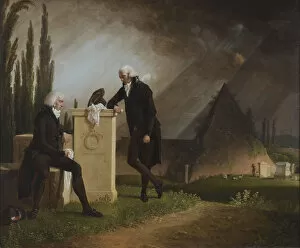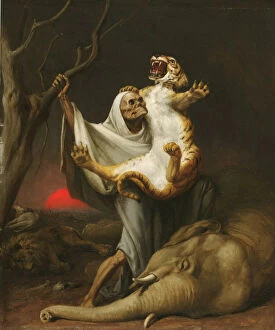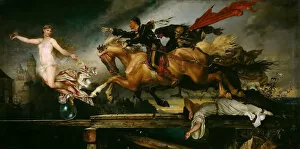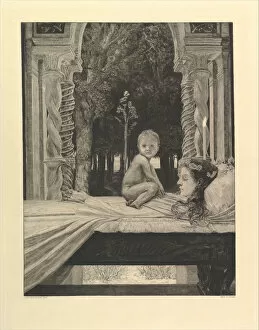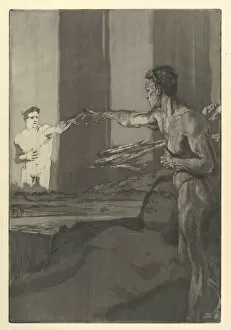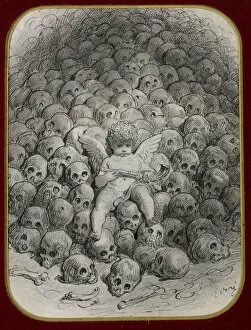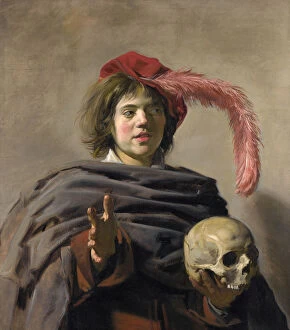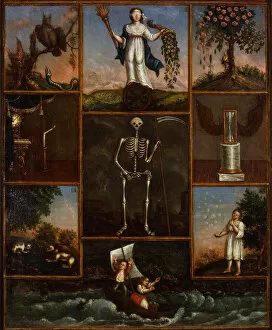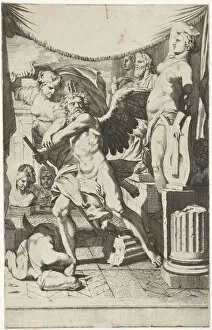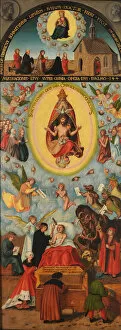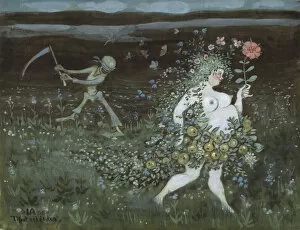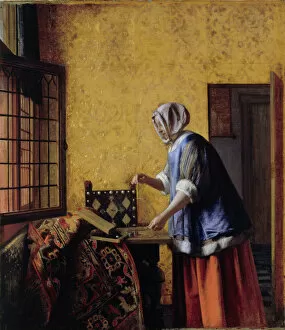Death Symbols Collection (#2)
"Exploring the Enigmatic World of Death Symbols: A Captivating Glimpse into Mortality's Artistic Reflections" Delve into a realm where art intertwines with mortality
For sale as Licensed Images
Choose your image, Select your licence and Download the media
"Exploring the Enigmatic World of Death Symbols: A Captivating Glimpse into Mortality's Artistic Reflections" Delve into a realm where art intertwines with mortality, as we unravel the captivating symbolism behind death in various masterpieces. From haunting self-portraits to allegorical compositions, these works offer profound insights into our fascination with life's inevitable end. In Arnold Bocklin's "Self-portrait with Death Playing the Fiddle, " an eerie dance unfolds between the artist and his skeletal companion. The fiddle's melancholic tune resonates, reminding us of death's omnipresence and its role as both conductor and participant in life's symphony. Konstantin Andreyevich Somov captures Harlequin and Death in a mesmerizing embrace. This enigmatic duo symbolizes the eternal dance between joy and sorrow, laughter and tears—a reminder that even amidst mirthful moments, death lurks nearby. Lovis Corinth confronts mortality head-on in his "Selfportrait with skeleton. " With unflinching gaze, he embraces his own skeletal reflection—a poignant reminder that death accompanies us throughout our existence, urging us to cherish every fleeting moment. Alfred Rethel presents an intriguing perspective on death through "Death as a friend. " Here, death is not feared but welcomed—an ally guiding souls towards their final destination. It challenges conventional notions by portraying demise as a comforting presence rather than a dreaded foe. Frans Hals' "Young Man holding a Skull (Vanitas)" encapsulates vanitas—the transience of earthly pleasures—through juxtaposition. The young man cradles a skull while surrounded by lavishness; it serves as an admonition against materialism and reminds us of life’s fragility. Socrates seeking Alcibiades finds Giuseppe Cesari capturing philosophical introspection amid mortal contemplation.


